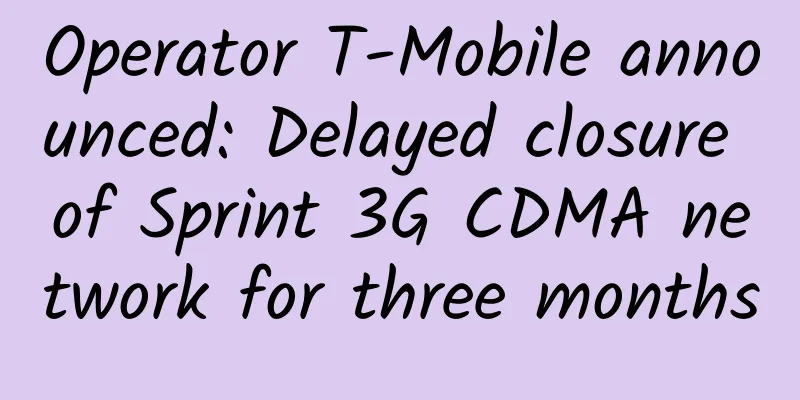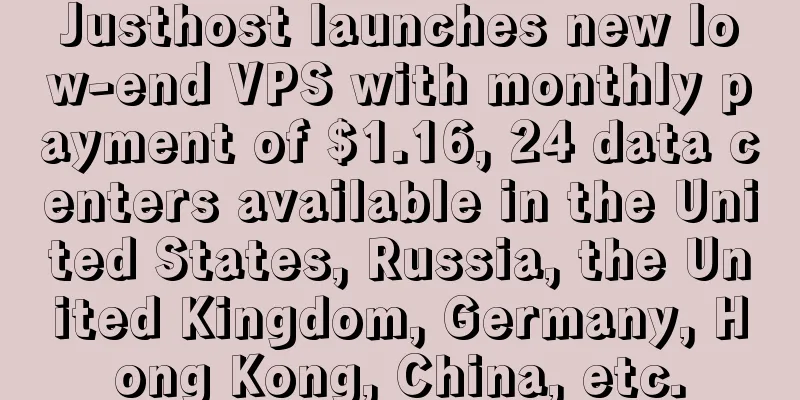The key to moving towards multi-cloud is management tools

|
Now it has become a consensus that enterprises should go to the cloud, and more and more enterprises are beginning to realize the benefits of using multiple cloud platforms. However, a good cook cannot cook without rice. The biggest obstacle that enterprises currently face in adopting multi-cloud is the lack of reliable management tools. This makes it difficult for enterprise IT teams to coordinate and coordinate when switching between private cloud, public cloud, and even hybrid cloud platforms, which leads to resource consumption. Therefore, when enterprises rush to multi-cloud, it depends on whether management tools can keep up in time.
Why go cloudy? Current enterprise needs have gone beyond the original cloud applications and have begun to build cloud-native solutions that utilize AI, IoT, blockchain, and serverless computing, which requires integrated platforms, industry solutions, and multi-cloud strategies. A multi-cloud strategy is that an enterprise only utilizes the best parts of each cloud platform and mixes together the infrastructure that meets its specific needs. In addition, and perhaps most importantly, a multi-cloud environment can be configured to provide fast failover capabilities. Even if a host fails, business operations can continue to run at full speed by immediately switching to another platform that has been incorporated into the multi-cloud system. In addition, the risk of using a single cloud provider is that the enterprise may find itself unable to easily uninstall applications, migrate applications to other cloud providers, or deploy them internally. Nowadays, leveraging the strengths of multiple cloud providers to meet the needs of specific applications has clearly become a must-have for enterprises to improve their competitiveness. Multi-cloud management tool challenges Since enterprises need multiple clouds, can IT departments achieve multi-cloud management by piecing together the management methods of different clouds? Of course not. In fact, the typical problem encountered by enterprises managing multi-cloud workloads is not just VM sprawl, but VM sprawl across multiple locations. In addition, because the teams responsible for various clouds are different and work separately from each other, multi-cloud adopters also face the danger of creating islands. At the same time, since each cloud has its own infrastructure configuration, APIs, and services, enterprises must custom configure applications and write cloud-specific scripts for each environment to migrate applications to multiple clouds, which is undoubtedly an expensive and complicated process. Another challenge facing multi-cloud adopters is security. With the large amount of data generated in the cloud every day, ensuring the consistency of metadata is critical. At this time, enterprises need to seriously consider how rapidly changing business processes affect issues such as integration, identity management and compliance. Executives at international companies must also grapple with the additional challenge of handling data residing in multiple countries, as creating a multi-cloud strategy that spans multiple countries often requires complying with specific rules and regulations in the countries where the cloud data ultimately resides. What kind of management tools do you need for multi-cloud? In the face of the above challenges, there is no doubt that a set of dedicated multi-cloud management tools is needed to effectively supervise and support the multi-cloud environment. For example, to solve the problem of scattered virtual machines, multi-cloud management tools are needed to help enterprise IT departments more strictly control VM deployment and avoid out-of-control costs. In order to prevent information silos, multi-cloud management tools enable managers and employees across the enterprise to view all cloud-related services and activities, improve efficiency and eliminate unnecessary expenses. Dedicated multi-cloud management tools can also manage the lifecycle of hosted applications in multi-cloud environments to simplify application migration. As cloud security becomes increasingly complex, multi-cloud management tools should be able to securely handle different levels of authorization, including identity and access management, to ensure compliance and security of cross-cloud operations. Multi-cloud management tools should be scalable enough to support a range of different technologies and provider protocols. For example, they need to support cloud VM deployment, storage, networking, user authentication and authorization, container technology, and analysis, and from a cloud perspective, they must also support the major providers: AWS, Azure, and GCP, as well as common virtualization technologies such as VMWare, Xen, and Azure Stack. Moreover, multi-cloud management tools can integrate the task windows of various cloud platforms into one interface for management and control. Multi-cloud management tools can realize features such as migration from and to the cloud, two-way access, and trouble-free integration into the company's existing infrastructure. In short, companies must be able to access data from the cloud easily, securely, and economically. Simplified billing is another benefit that multi-cloud management tools can provide. Therefore, multi-cloud management tools that take into account multiple cloud providers, provide pricing models, security and compliance policies, service level agreements (SLAs) and support policies will surely be sought after by enterprises adopting multi-cloud. Who is working on multi-cloud management tools now? According to the 2017 State of the Cloud Survey released by RightScale, a cloud management platform provider, about 85% of enterprises now have a multi-cloud strategy, up from 82% in 2016. However, the selection of multi-cloud management tools on the market is still quite limited. However, as vendors such as Cisco, RightScale, VMware and BMC Software begin to provide more usable tools that can help enterprises fully control multi-cloud environments, the above situation has begun to change. I believe that in the near future, people will soon see convenient management of multi-cloud platforms. Conclusion It is clear that there is still some way to go for enterprises to have a complete set of multi-cloud management tools, but this should not prevent them from building an infrastructure that embraces multi-cloud. Because the future of enterprises in the cloud depends on their openness and the ability to switch tasks at any time across different technology platforms. Multi-cloud, as a service model across private clouds and multiple public clouds, undoubtedly puts forward new requirements for infrastructure, platform and software combinations, and it is also waiting for a reliable "full-time housekeeper" to appear to complete the unified management and control of various cloud platforms. |
<<: How NFV and SDN will shape the future of telecommunications
>>: A dream combination: IoT and edge computing
Recommend
Cool Knowledge: Learn about RF Antennas in One Article
RF Antenna picture An antenna is a device used to...
IDC: Strong growth in enterprise WLAN market in the fourth quarter and full year 2021
According to IDC's Global WLAN Market Quarter...
IPv4 and IPv6: Is the Internet Facing a Split?
The Internet is facing a technological split, and...
IDC: China's business intelligence software market is expected to reach US$1.33 billion by 2025
According to the "China Business Intelligenc...
What are the characteristics and uses of Category 7 (Cat7) cables?
Today, demand for faster Internet and data transm...
HostKvm is now available in Hong Kong International Zone C, 1Gbps bandwidth Hong Kong VPS 20% off starting at $6.8/month
HostKvm has sent a message about the new Hong Kon...
Symantec launches new information protection solution to automatically encrypt critical enterprise data
The Symantec Information Centric Security solutio...
How do operators’ mountaineering teams climb “5G+Industrial Internet”?
Industry is the foundation of a country and the m...
Cisco ACI original core technology expert reveals the birth of ACI
The official development of ACI began in January ...
Serverless Engineering Practice | Quickly Build Kubeless Platform
Quickly build a Kubeless platform Introduction to...
Foxit Kunpeng OFD technology debuts at the 7th Military Expo to help the information construction of party, government and military documents
From July 5 to 7, 2021, the "9th China Comma...
LOCVPS: Los Angeles VPS 40% off, 1G memory, 30G hard disk, 400GB monthly traffic starting from 22.2 yuan per month
LOCVPS is a Chinese VPS service provider founded ...
Ministry of Industry and Information Technology: my country's fiber optic transformation has been fully completed, 4G network covers urban and rural areas, and 5G network is accelerating development
News on September 10: Yesterday, the Ministry of ...
WiFi 7 is here. What are the improvements compared to WiFi 6?
WiFi 7 has become one of the hottest topics, espe...
How to calculate 5G backhaul bandwidth?
[[353172]] This article is reprinted from the WeC...









